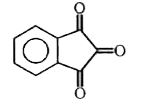Which of the following statement is true ?
(a)CO form stable compound with Hb and impede transport of O2
(b) SO2 is a water soluble compound and does not impede
transport of O2
(c ) Amount of Cl– is same in both pulmonary veins and coronary artery.
a and c
a and b
a, b and c
b and c
The correct Answer is:C
To determine which of the statements is true, we will analyze each statement one by one.
1. Statement (a): "CO forms a stable compound with Hb and impede transport of O₂."
- Carbon monoxide (CO) binds with hemoglobin (Hb) to form carboxyhemoglobin, which is a very stable compound. This binding reduces the availability of hemoglobin to bind with oxygen (O₂), thereby impeding the transport of oxygen in the blood. Therefore, this statement is true.
2. Statement (b): "SO₂ is a water soluble compound and does not impede transport of O₂."
- Sulfur dioxide (SO₂) is indeed a water-soluble compound. However, it does not form a stable compound with hemoglobin like carbon monoxide does. As a result, it does not interfere with the transport of oxygen. Thus, this statement is also true.
3. Statement (c): "Amount of Cl⁻ is the same in both pulmonary veins and coronary artery."
- Chloride ions (Cl⁻) are present in the blood, and their concentration can vary depending on several factors, including the physiological state of the body. However, in general, the amount of chloride ions is relatively consistent in the blood circulation, including in the pulmonary veins and coronary arteries. Therefore, this statement is also true.
After analyzing all three statements, we find that all of them are correct.
Final Answer: All the statements (A, B, and C) are true.
- Carbon monoxide (CO) binds with hemoglobin (Hb) to form carboxyhemoglobin, which is a very stable compound. This binding reduces the availability of hemoglobin to bind with oxygen (O₂), thereby impeding the transport of oxygen in the blood. Therefore, this statement is true.
- Sulfur dioxide (SO₂) is indeed a water-soluble compound. However, it does not form a stable compound with hemoglobin like carbon monoxide does. As a result, it does not interfere with the transport of oxygen. Thus, this statement is also true.
- Chloride ions (Cl⁻) are present in the blood, and their concentration can vary depending on several factors, including the physiological state of the body. However, in general, the amount of chloride ions is relatively consistent in the blood circulation, including in the pulmonary veins and coronary arteries. Therefore, this statement is also true.
Topper's Solved these Questions
- BREATHING AND EXCHANGE OF GASESBOOK - ALLENCHAPTER - BREATHING AND EXCHANGE OF GASESEXERCISE - S
33 Videos
- BODY FLUIDS AND CIRCULATIONBOOK - ALLENCHAPTER - BODY FLUIDS AND CIRCULATIONEXERCISE - S
45 Videos
- CELL BIOLOGY (CELL STRUCTURE, FUNCTION & CELL DIVISION)BOOK - ALLENCHAPTER - CELL BIOLOGY (CELL STRUCTURE, FUNCTION & CELL DIVISION)EXERCISE - EXERCISE-IV (Directions for Assertion & Reason questions)
19 Videos
Similar Questions
Knowledge Check
Which of the following does not form a stable hydrate on addition of H2O ?
A B
B C
C D
D
Open circulatory system which does not participate in the transport of O2 occurs in
View SolutionWhich of the following is true regarding the given electron transport chain?
CoQ→Cytc→Cytaa3→O2
View SolutionWhich of the following statements is/are correct?
A mixture containing 64.0gH2 and 64.0gO2 is ignited so that water is formed as follows:
2H2+O2→2H2O
View SolutionWhich of the following is a secondary pollutant ? (A) O3 (B) SO2 (C) CO2 (D) CO
View SolutionState whether the following statements are true or false. Major amount of CO2 from the tissues is transported to the lungs in the form of hydrogencarbonates.
A. True
B. False
View SolutionThe following are two statements regarding insects :
(a) Insects have jointed appendages .
(b) Insect blood has no role in O2 transport .
View SolutionAmount of CO2 transported as bicarbonates, carbamino compounds and dissolved condition respectively is
View Solution
